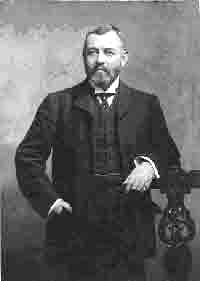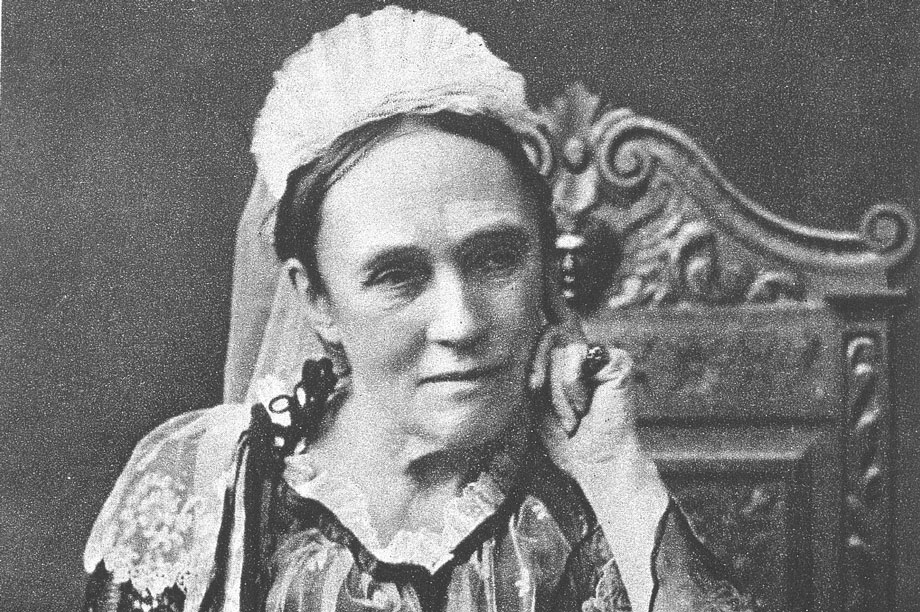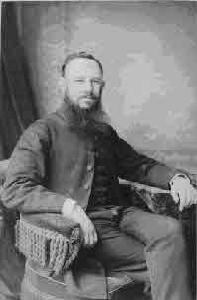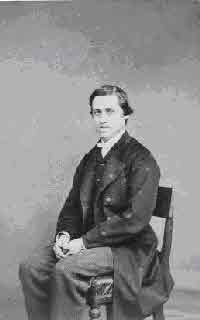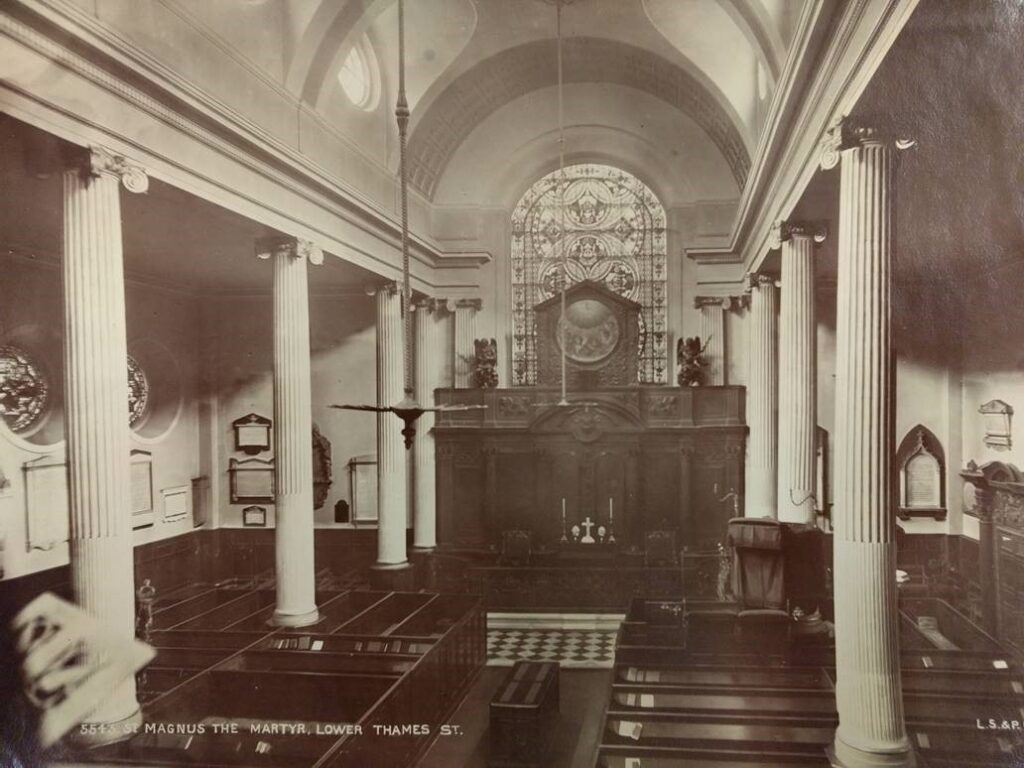
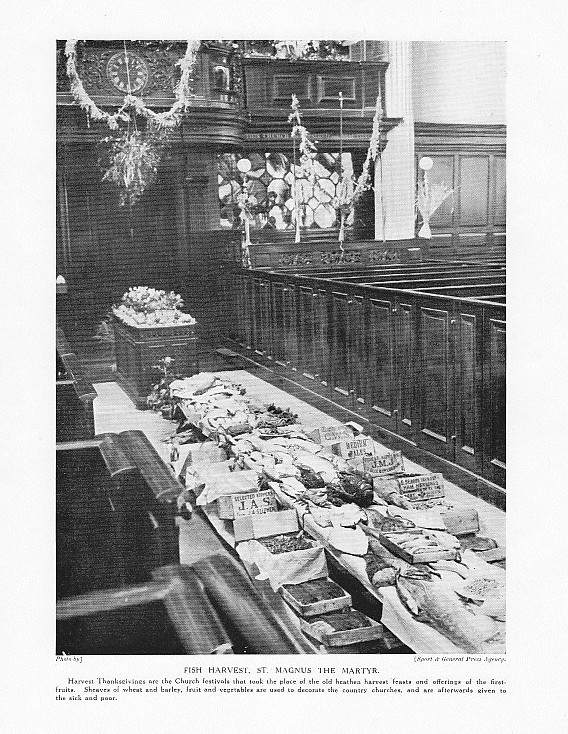
Most of the old box pews were replaced with the current pews as part of the restoration of the church in 1924. However, two of the original 17th century box pews, used by the churchwardens, can be seen at the west end of the nave, either side of the door between the nave and the narthex.
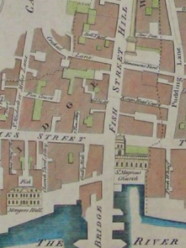
The ancient parishes of St Magnus the Martyr and St Margaret, New Fish Street (not rebuilt after the Great Fire) were united by the Rebuilding of London Act 1670 (22 Charles II c.11) and to St Michael, Crooked Lane (demolished to make way for King William Street) in 1831 by an Act for improving the approaches to London Bridge (Local and Personal Act, 1 William IV c. iii). St Michael Crooked Lane retained a burial ground in Fish Street Hill and burials continued there until the City churchyards were closed by the Burial Act of 1852. The Three United Parishes retain the right to appoint six churchwardens, two for each parish. Parish clerks are also still appointed for each of the three parishes.
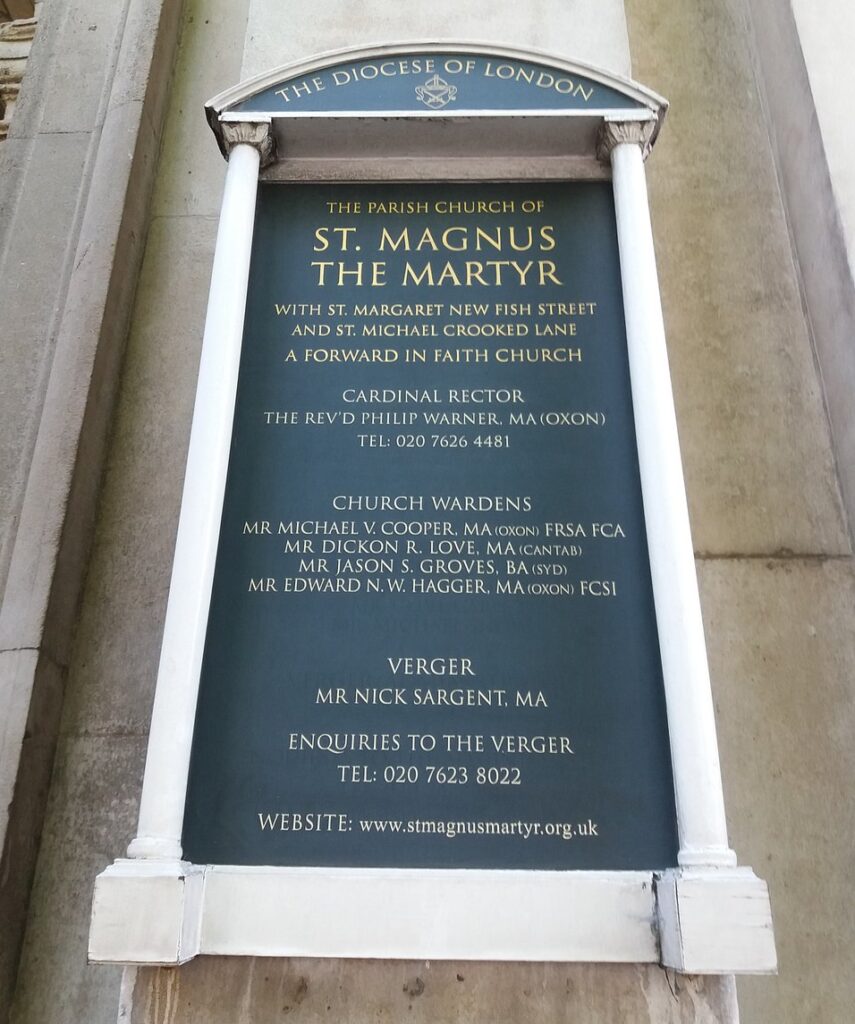
Services at St Michael Crooked Lane ended more abruptly than planned:
Demolition of St. Michael’s Church, Crooked Lane London.
The year book of daily recreation and information: concerning remarkable men and manners, times and seasons, solemnities and merry-makings, antiquities and novelties by William Hone (1832)
On Sunday morning the 20th of March, 1831, a crowded congregation assembled at the above church, on the occasion of the celebration of divine service for the last time, preparatory to the pulling down of the edifice for the approaches to the New London bridge. A sermon was to have been preached by the Rector, the Rev. Dr. Dakins, for the benefit of Bridge, Candlewick, and Dowgate Ward schools; and the church, which was erected by Sir Christopher Wren, and is peculiarly neat and handsome, with numerous tablets on its walls, to the memory of the dead, presented at the commencement of the service a very interesting spectacle. All the pews, and the different aisles, were filled to excess. The charity children, accompanied by the organ, sang with impressive effect, ‘ Before Jehovah’s awful Throne,’ in which they were joined by the voices of numerous individuals in the congregation, whose feelings were evidently touched with the solemnity of meeting for the last time in the church.
Just about the conclusion of the reading of the second lesson, part of the mortar in the cornice of the ceiling over the altar where the rector was stationed fell down. Immediate alarm seized the congregation, and the larger portion, under apprehension that the church was falling, rushed with terror towards the door. For several minutes the screams and thronging for escape were appalling, while strenuous efforts were made to compose the minds of those who remained, by assuring them that no danger was to be apprehended. The Rector went into the reading desk,where he earnestly entreated the congregation to return to their seats, and directed the singing of the 93rd psalm. This had partly proceeded, and the congregation was gradually reassembling, when a second and somewhat larger fall of mortar from the same spot instantaneously renewed the terror, and compelled the service to be abruptly concluded, to the great injury of the collection for the charity, and the regret and dismay of the persons assembled.
It has been stated that great blame is attributable to the city authorities, in consequence of their permitting the excavations for the London-bridge approaches to extend so near to the church, before the time that it could cease to be used for divine service; and it is particularly to be regretted that the committee of the corporation have intimated their intention to withdraw their promised contribution of 20l. to the charity schools in aid of the sermon, because, as they allege, greater haste was not adopted towards removing the monuments from the church; but the reverend Rector cheerfully acceded to an application, made to him in the vestry-room by the trustees, to preach his intended sermon next Sunday morning, at St. Magnus church, for the charity, which has also materially suffered in its funds from the numerous houses lately pulled down for the London-bridge approaches.
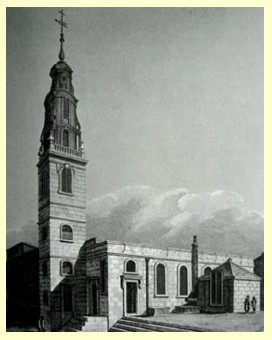
The incumbent of St Magnus at the time of the union with St Michael, Crooked Lane was the Revd Thomas Leigh (1771-1848, Rector of St Magnus 1808-48 and of Wickham Bishop’s, Essex and President of Sion College 1829/30), whose monument is on the north aisle wall near the Lady Chapel. The inscription reads:
To the memory of the Revd Thomas Leigh M.A. for 40 years Rector of the United Parishes of St Magnus the Martyr & St Margaret New Fish Street and spiritual pastor of St Michael from the time of the union with the above parishes. He departed this life June 10th 1848 in the 77th year of his age and was buried at Coldhanger in the county of Essex.
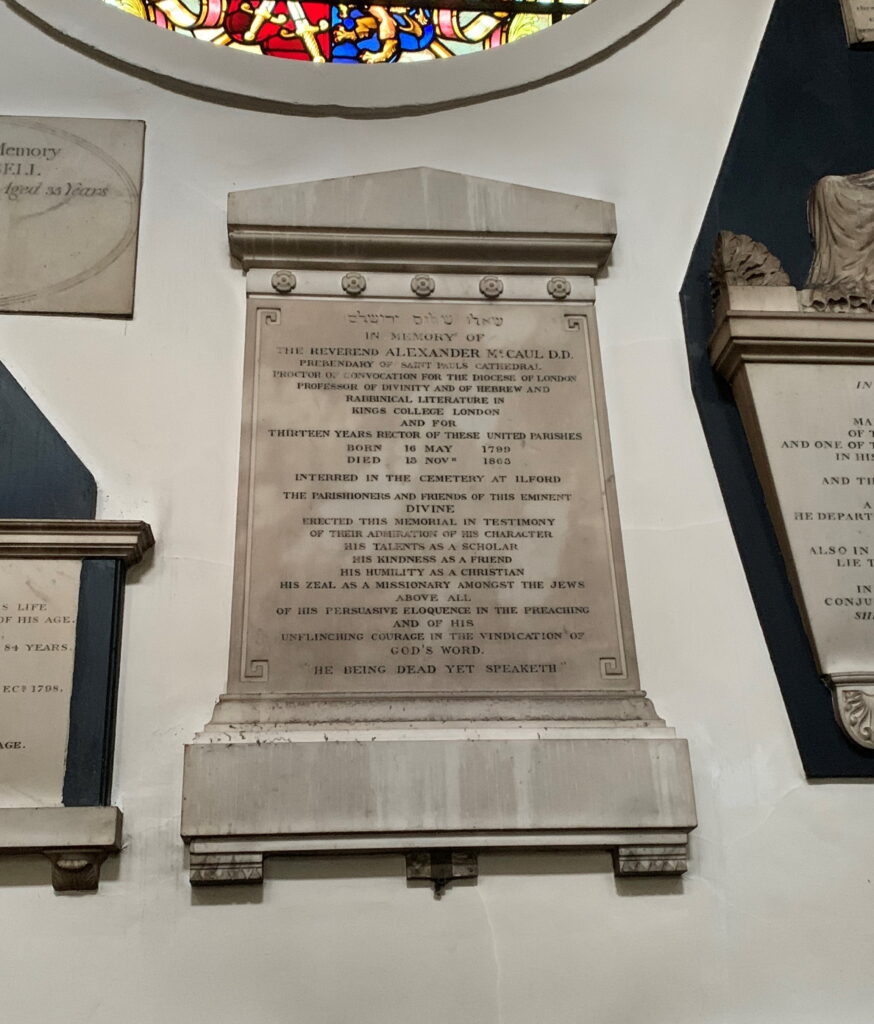
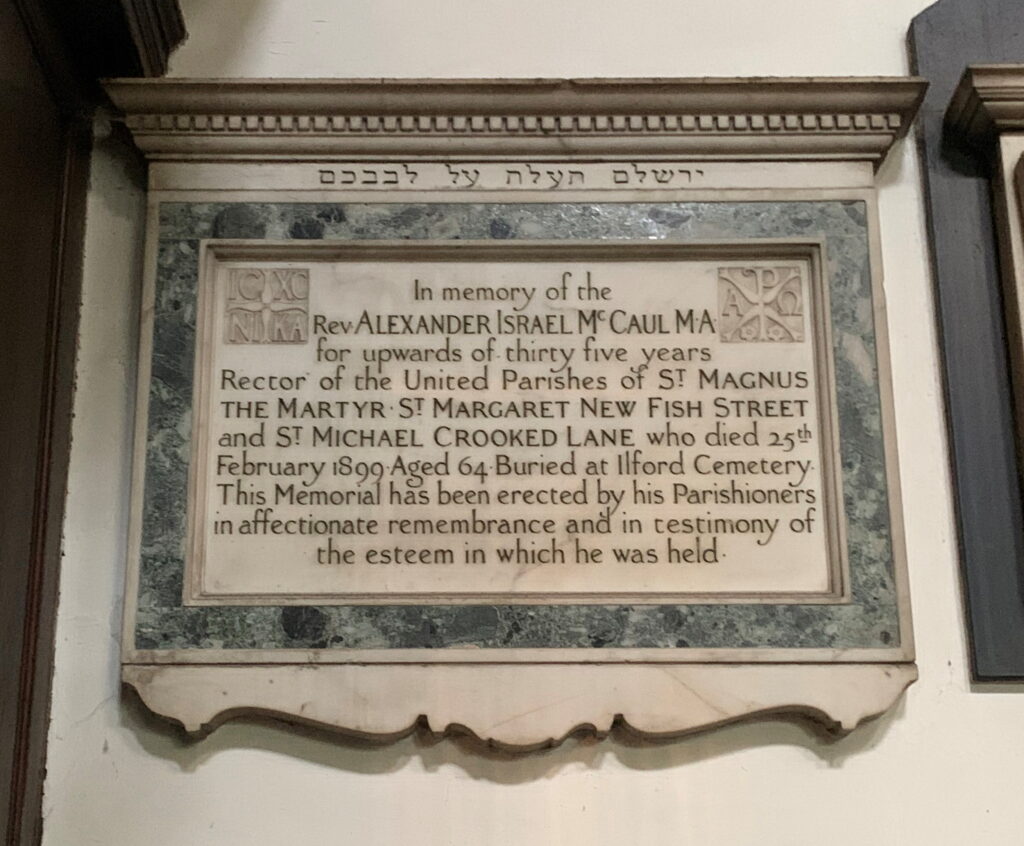
Leigh was succeeded by the Revd Dr Alexander McCaul (1799–1863, Rector 1850–63 and Professor of Hebrew and Rabbinical Literature at King’s College, London from 1841), who coined the term ‘Judaeo Christian’, and his son Alexander Israel McCaul (1835–1899, Curate 1859–63, Rector 1863–99). Their memorials can also be found on the north aisle wall. Another son, Joseph Benjamin McCaul (1827–92) served as Curate from 1851 to 1854.
A daughter, Elizabeth Finn (1825–1921), the wife of James Finn (British Consul in Jerusalem from 1846 to 1863), was a noted linguist who founded a number of organizations. These included the Jerusalem Literary Society (forerunner to the Palestine Exploration Fund), the Society for the Relief of Persecuted Jews (Syrian Colonization Fund) and the Distressed Gentlefolk Aid Association (subsequently known as Elizabeth Finn Care). Both Dr McCaul and his daughter worked closely with Lord Shaftesbury.

